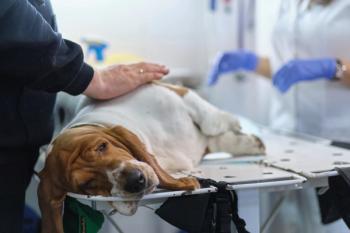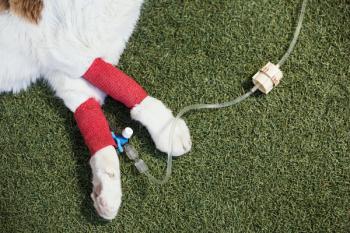
UW veterinary researchers look to 're-engineer' surface wounds
Madison, Wis. - Veterinary researchers at the University of Wisconsin-Madison awarded a $4 million Recovery Act Grant to study surface and chronic wounds, which cost the U.S. healthcare system $15 billion each year.
MADISON, WIS. — Veterinary researchers at the University of Wisconsin-Madison (UW) were awarded a $4 million Recovery Act Grant to study surface and chronic wounds, which cost the U.S. healthcare system $15 billion each year.
During the course of the study, researchers will re-engineer the surface of a wound at the molecular level.
The research team includes UW School of Veterinary Medicine's Jon McAnulty, Chuck Czuprynski, and Dick Dubielzig, along with Nick Abbott of the UW College of Engineering, Ronald Raines of the UW Department of Biochemistry, Mike Schurr of the UW School of Medicine and Public Health and Chris Murphy from the University of California-Davis.
"Instead of treating a wound that already represents an unhealthy cellular environment, we are changing the environment," says McAnulty. "This concept is the big umbrella that we are investigating and under that umbrella, there are several approaches being studied by the many different labs."
McAnulty's and Czuprynski's laboratories are focused on antimicrobial solutions. They are using silver nanoparticles, adhering them to a nanometer thick film that is constructed away from the wound and then applied to its surface.
In a possible commercial application, their lab has adhered a nanometer-thick film with silver particles onto a collagen-based product. When applied to a wound, the silver particles help to eliminate the bacterial infection on the surface while the collagen helps repair the skin. For other wound types, they can use a film with different properties to immobilize growth factors and promote healing.
"These films are biodegradable, which is great because the degradation of the film causes a time release of the characteristics we want," McAnulty says.
The product idea has spun into a start-up company, Imbed Biosciences, which will seek opportunities to integrate this technology into other commercial products, according to UW. Clinical trials may be six to eight months away.
Other researchers are investigating other ways to re-engineer the surface of a wound, and the groups meet weekly online to update information and share ideas.
"For the future of wound care, it might look like a system allowing custom therapy for a wound depending on the desired outcomes," says McAnulty. For example, it may start with an antimicrobial treatment to remove a biofilm but then be modified (or engineered into a single wound treatment with time release characteristics) to reduce scarring, preferentially promote epithelial cell coverage or increase vascularity.
"Eventually, all of the labs' efforts could layer upon one another and become interfaced in a single product or a system of products," says McAnulty. "It is a big cohesive, collaborative group."
Newsletter
From exam room tips to practice management insights, get trusted veterinary news delivered straight to your inbox—subscribe to dvm360.



